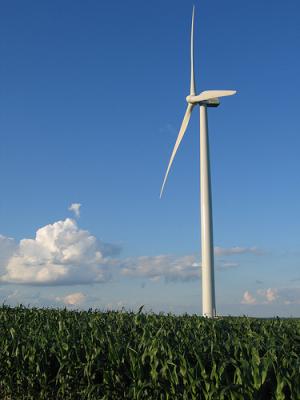 Although Americans overwhelmingly support renewable energy, it’s usually much harder to find a way to support the development of renewables close to home. This innovative proposal offered last session in the Minnesota state legislature could change that.
Although Americans overwhelmingly support renewable energy, it’s usually much harder to find a way to support the development of renewables close to home. This innovative proposal offered last session in the Minnesota state legislature could change that.
The bill would require utilities to offer a green pricing program for local, distributed wind power. Green pricing means you can opt to pay a bit more on your electric bill to support clean energy development by your utility. The largest investor-owned utility in Minnesota – Xcel Energy – already offers Windsource, a program to buy blocks of wind power at a premium price. The law would essentially require Xcel to offer a “Local Windsource” option for ratepayers.
Under the proposed law, projects supported by “Local Windsource” would have to be 25 megawatts or smaller, located in Minnesota, and owned by Minnesota residents. Only ratepayers that opt in would financially support the program.
The relevant legal language is below:
2.7 Subd. 2a. Local wind energy rate option. (a) Each utility shall offer its customers
2.8 one or more options allowing a customer to determine that a certain amount of electricity
2.9 generated or purchased on the customer’s behalf is from wind energy conversion systems
2.10 that meet the following criteria:
2.11 (1) have a nameplate capacity of 25 megawatts or less, as determined by the
2.12 commissioner of commerce;
2.13 (2) are owned by Minnesota residents individually or as members of a Minnesota
2.14 limited liability company organized under chapter 322B and formed for the purpose of
2.15 developing the wind energy conversion system project;
2.16 (3) the term of a power purchase agreement extends at least 20 years; and
2.17 (4) the wind energy conversion system is located entirely within Minnesota.
2.18 (b) Each utility shall file a plan with the commission by October 1, 2011, to
2.19 implement paragraph (a).
2.20 (c) Each utility offering a rate under this subdivision shall advertise the offer with
2.21 each billing to customers.
2.22 (d) Rates charged to customers for energy acquired under this subdivision must be
2.23 calculated using the utility’s cost of acquiring the energy for the customer and must be
2.24 distributed on a per-kilowatt hour basis among all customers who choose to participate
2.25 in the program.
The bill didn’t get a hearing before the Republican legislature, but it’s an interesting proposal for increasing the generation of local, distributed wind and its attendant economic benefits, with twice the jobs and 1.5 to 3 times the economic benefits of absentee-owned wind power.
Of course, wind power is so economical that utilities really have no business charging extra for it, but nevertheless, the idea of using green pricing to support local renewable energy makes a lot of sense.
Photo credit: Flickr user scelis



